Should I be repinning other people’s pins – as a Pinterest marketer?
It’s a question I’m hearing a LOT recently.
Understandably, there is some confusion around this topic. And part of the reason is that the general wisdom on this has changed somewhat over the last couple of years.
So in today’s post, I’m clearing it up – and providing answers! (Hurrah for answers!)
Read on for:
- The FAQs: Should I repinning other people’s pins?
- Five circumstances when it IS quite helpful / useful to repin other pins
Let’s chat it out and get you some much-needed clarity, Lovely!
FAQs: Should I be repinning other pins?
Let’s start by addressing the most common questions around this issue. The first one I hear a lot is this…
Do you need to repin others’ pins – for the Pinterest algorithm to favor you?
And the basic answer is… No. A couple of years ago, the creator community did receive confirmation directly from Pinterest that repinning others’ pins is NOT necessary for success. However, they also said that it’s also okay to responsibly repin others’ content – when and if it is helpful to your strategy. (More on that below!)
But, bottom line… If you decide to take an approach in which you only pin your own content – you will NOT be penalized in the algorithm. (Yay for options!)
What percentage of others’ pins (to your own pins) should you repin?
This is both an easy one to answer, and a hard one. 😉
Because there is really no answer… There is simply no magic formula for this. It depends on how often you want to pin, how much back content you have to pin, how much new content you’re creating, and at what cadence. (And there are probably other factors, too!)
But, the actual answer is that it’s up to you. AND (Lean in; here’s the gold nugget…) It’s actually more important to be consistent than to focus on a certain ratio.
Okay, so when does it make sense to be repinning other pins?
I’m so glad you asked this one! The rest of this post will be about JUST that! 😀
I’ve identified five specific circumstances in which repinning others’ pins is helpful and/or useful to Pinterest marketers. So let’s look at them!
1. Repin other people’s pins when you create a new Pinterest board.
The first situation in which I find it useful to pin other people’s pins? It’s when you’re creating a brand new Pinterest board on your account.
After you’ve named the board and written a keyword-optimized board description for it, I recommend that you add 5 to 10 pins that are a “perfect fit” for the board… pins that others have pinned that have similar keywords and are on-topic. This practice is sometimes called “seeding” the board.
The goal is to signal Pinterest’s algorithm about what this board is about. By extension, you’re helping Pinterest to understand what you’ll be pinning here – and in what types of searches to surface those pins.*
Let’s look at an example to make this more meaningful:
- You’re a Post-Divorce Life Coach.
- You create a new board called “Divorce Recovery.”
- So you “seed” the board with pins that have similar keywords, like “recovering from divorce,” “life after divorce,” “loneliness after divorce,” etc.
- You’re helping Pinterest to understand that pins from this board might be helpful and relevant to women who search for these things – and similar things.
(*Psssst… Before we move on to #2…
In case you are new around here and wondering how this all works… Pinterest is a search engine, not social media. So the approach we take as marketers is soooooo wildly different than the approach we take on IG, FB, or any social channel.
If you are an online coach, course creator, or service-based business owner, and you want to learn more about that, I’ve got just the thing for you!
My free on-demand masterclass (The 5 Secrets for Using Pinterest to Grow Your Audience on Autopilot & Get Clients) will give you the foundational knowledge you need to approach Pinterest the right way.
Let’s shorten your learning curve and side-step the frustration that comes from trying to “treat Pinterest like social media,” shall we?
You can enroll right here if you’d like 👇 … without missing a beat… and then keep reading the blog post. (I have four more tips to share…)
2. Repin other people’s pins while you’re building your own body of work.
Pinterest is all about getting discovered by women who are *already searching* for the ideas, solutions, and the value that you offer – through your content.
Ideally, you’ll be creating lots of valuable content that inspires your ideal clients and prospects. You want to educate them, showcase your expertise, show you can solve small problems for them, and – most of all – help them to see the unmistakable value of investing in your paid offers.
But you don’t have to wait until you have loads of content – to get started promoting it on Pinterest! You can get started with even just a few blog posts (or podcast episodes, Youtube videos, etc.).
And, while you are building up your own body of work, you can supplement your own pins (pins that lead pinners to YOUR valuable content) with other people’s pins.
So, that’s the second situation in which I find it super-helpful to pin others’ content… You can add high-quality, on-topic pins from other accounts to your Pinterest boards.
This serves to:
a) Supplement your own content on your boards – so you’re pinning consistently while you’re building your own body of work to pin; and.
b) Diversify what you are pinning and space out your own content – so you don’t pin your own content too repetitively… (or appear to be doing so!)
One Caveat here though: For most Pinterest monetization strategies, the way you’ll make money is by bringing attention to your own pins – and your own content. So, don’t fall into the trap of repinning loads of other people’s pins… and hoping that will somehow pay your rent! 😉 You DO want to be focusing on creating and pinning your own content.
Make sense? Okay, then onward to #3…
(Pssssst…. You can 📌 pin this article for reference to your “Pinterest marketing” board:)
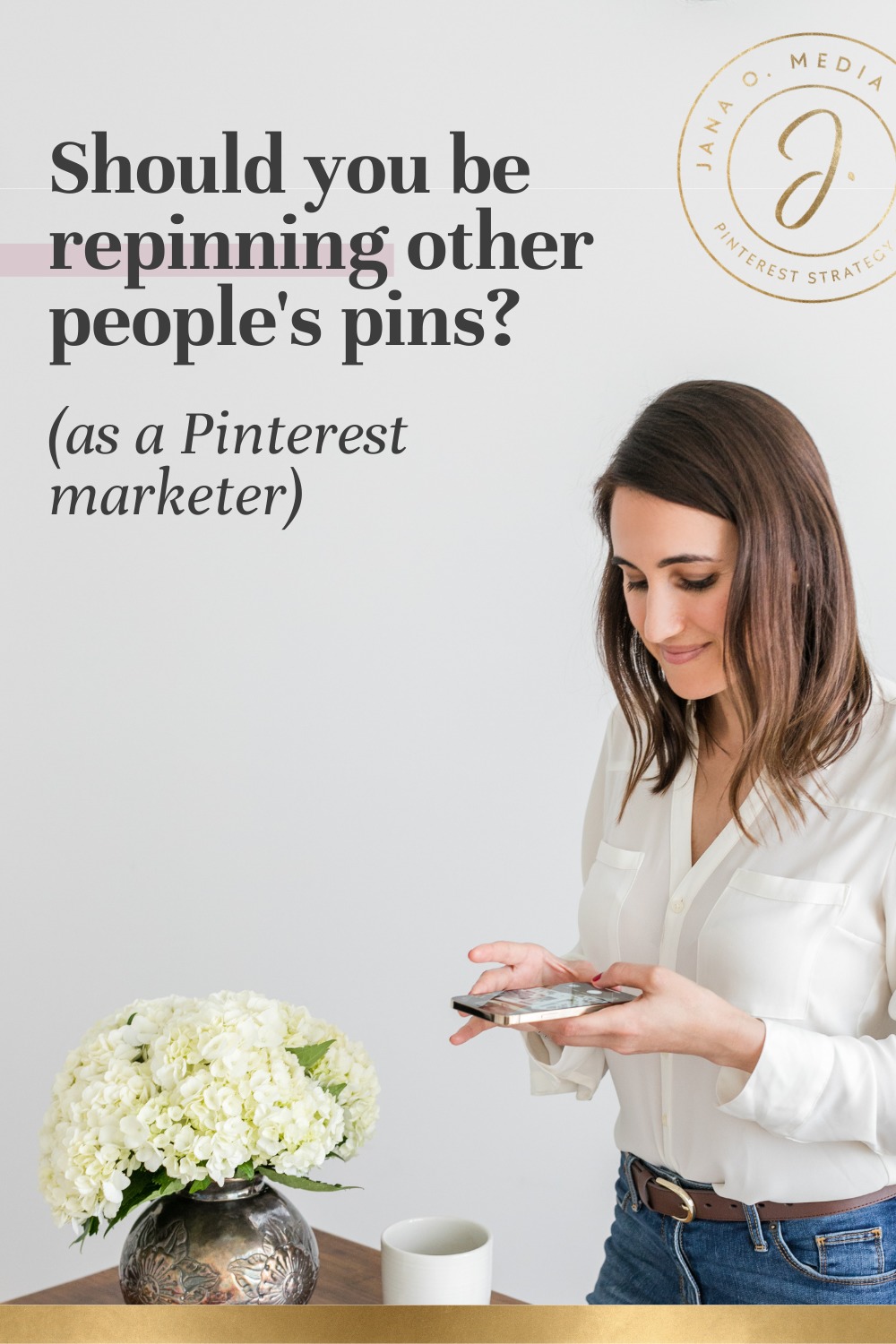
3. Repin other people’s pins when “reciprocity” pinning is part of your strategy.
Some Pinterest marketers find that “pinning reciprocity” strategies help them to increase their saves, impressions, and even outbound clicks.
How do these work? You have an agreement of sorts with other pinners. You repin a certain number of their pins (always ones that are high-quality and would be of interest to your audience). In exchange, they repin a certain number of your pins, too.
(TWO NOTES:
1. While I am NOT a big fan of two of these common strategies [group boards and re-pin for re-pin threads]… I DO like Tailwind Communities a lot!… They used to be called “Tailwind Tribes.”)
2. I consider Tailwind Communities a “201” strategy. I encourage you to get your basics in place FIRST (e.g. keyword research, strategic set up, pin graphic templates). Then, after you’re set up optimally, you can consider layering in Communities as a strategy.
So, that’s #3… the third case in which I think it’s quite useful to be pinning other people’s pins!
4. Repin other people’s pins when you’re collaborating on a client project.
Okay. #4 is a fun one. In some niches, it’s fairly common for you (as the Pinterest marketer) to regularly collab with clients via small group boards.
Examples:
- I have a brand strategist client who shares boards with her 1:1 clients. They co-curate images that essentially become brand mood boards – to set the tone for the brand they are creating together.
- A recent client, a virtual interior designer, does this too. She and her clients share boards to save ideas for kitchen re-designs. They help them communicate about what the client likes and desires.
In these cases, a group board is not being used to try to “hack traffic.” Rather, it’s being used as Pinterest had initially intended group boards be used… to collaborate with a very small group on a project.
And this is a great reason to be saving other people’s pins to your boards – as inspiration!
(Pro Tip: Once the brand and website are launched, or the kitchen is complete… You can consider re-optimizing the board for search. You can start by renaming it using a keyword-optimized title – like “Modern Farmhouse Kitchen Design Ideas” or “Bold Branding for a Health Coach” for example – to help the board be more discoverable in the future.)
5. Repin other people’s pins… just because you feel like it!
Just one more! It is totally fine to be repinning others’ pins to your boards… just because you want to. 😉
Maybe you’re on Pinterest while in line at the grocery store – and you see a pin that your audience would likely love.
Maybe you find a Youtube video that’s AMAZEBALLS and it just *needs* to be pinned to your board on that topic. Go for it!
Basically, it doesn’t hurt to use Pinterest like a user sometimes.
But, one more important thing about that… before I sign off on this post…
Yes, it’s totally okay to pin things sometimes – just because you want to. Just remember to keep the pins on your business account directly related to your business – and the content you create for business. And if you have boards and pins that aren’t related, be sure to make those “secret.”
Why make them secret? (…You might ask)
Because… remember, Pinterest is a search engine.
So, we want to keep our pins and boards on-topic – because they help Pinterest know what our content is about – and who they should show our pins to. Conversely, off-topic pins and boards (that are public) confuse the Pinterest algorithm. This makes it harder to get in front of an action-taking audience – women who are likely to spend money to solve the problems you solve.
Ready to learn more? And really be in the know about how to approach Pinterest like the search engine that it is? Then don’t forget to catch my free Masterclass:
The 5 Secrets for Growing Your Audience on Autopilot
& Getting Clients – Using Pinterest!
In this high-value session, I’m pulling back the curtain on how to use Pinterest the right way.
You’ll learn how to…
- Ditch the overwhelm that comes from aaaaaallll the Pinterest advice you’re hearing.
- Know what to focus on – and what not to waste your time on – so you can generate a steady stream of quality, targeted leads for your offers.
- Set yourself up for long-term, consistent sales – and even for success with those passive income offers you’re planning!
- Figure out what your ideal clients are really searching for – and get them to pay attention to you – on Pinterest!
Ready? Sign up here – for FREE! Add your name and a good email address, and I’ll send you access immediately.

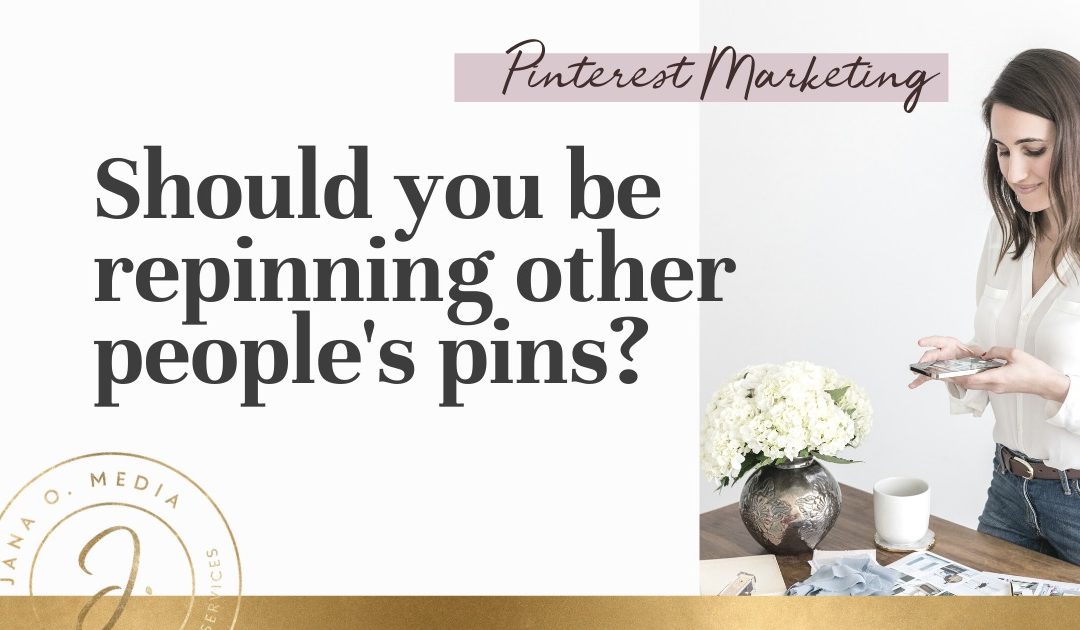
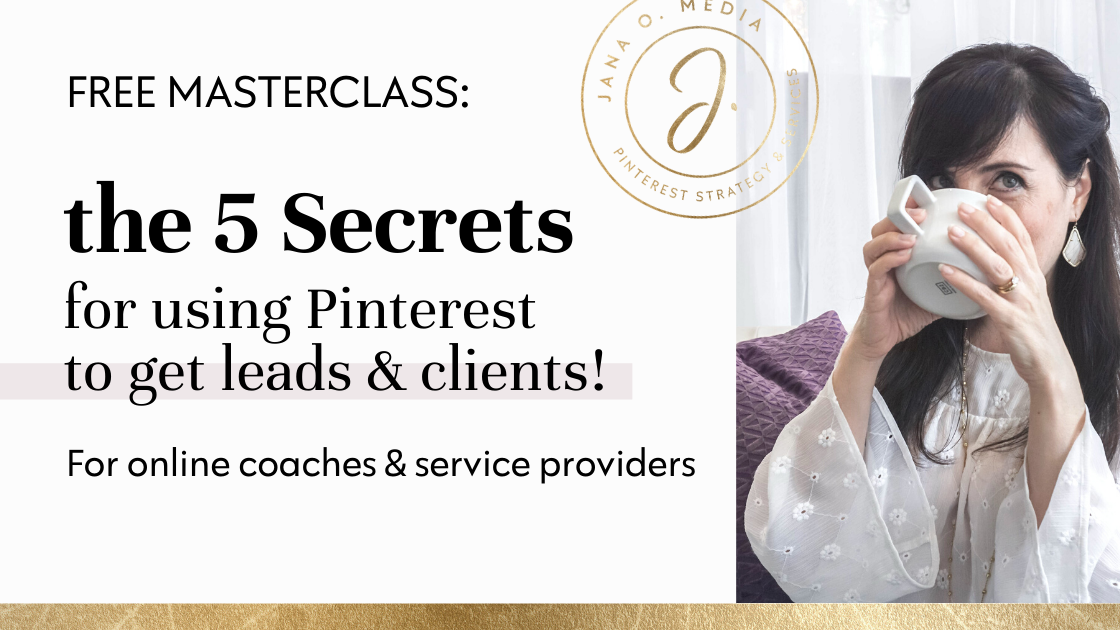
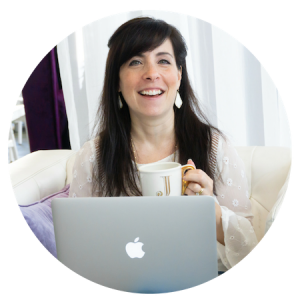
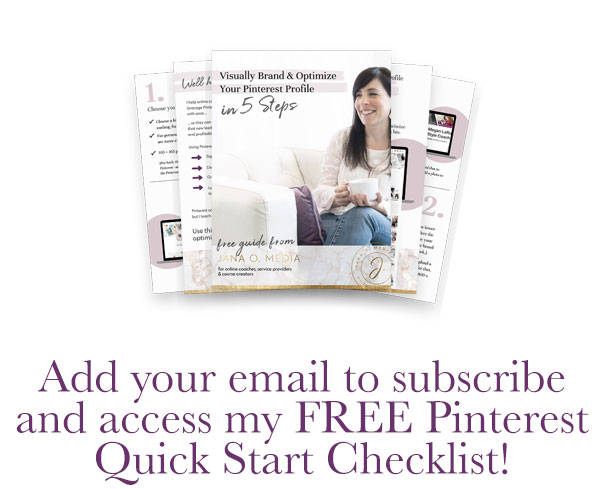
Hi Jano, I am glad I am the first to comment on this article. It is a wonderful article and it gives me some very important answers to some questions I had. But just for clarification, Jano, is it a normal process to see other pinner pins in your personal business profile? Let me know ASAP? I am so glad I saw your article. I am sort of new to blogging and all things Pinterest. I am just 6 months using Pinterest so I am not familiar with the do and don’ts. That being said, your article really come through on time for me.
Hi, Christiline! I’m so glad you found this blog post when you needed it! 🙂 Yes, if you pin other people’s pins, they can show up on your boards. Is that what you mean?